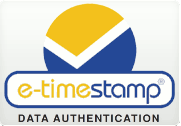Patent Law
Although international patent law is complex, and so we can't know how your case will turn out, proof of what you created and when will help significantly. We provide that proof in an easy and inexpensive way so you can protect your work early and often.
Prior Use Defense - rights to practice your invention
To pursue a prior use defense, trade secrets must have been in use more than a year before the filing date of the claimed invention, or the date on which the claimed invention was disclosed to the public. In such proceedings, irrefutably proving the date your organization initially established and used the trade secret is critically important. A digital timestamp can show that you were practicing that trade secret.
More information about this legal status available from this outside source.
Simultaneous Invention
The Act specifically states that practicing the simultaneous invention does not constitute infringement, nor does it invalidate the patent as “obvious.” It reaches the fair conclusion that if someone simultaneously invents the same innovation as the patent holder, that both must co-exist peacefully. A digital timestamp could show that you had already been practicing the invention.
More information about this legal status available from this outside source.
Prior Art
A significant part of a patent review relates to what type of "prior art" exists that might invalidate the claims of a patent. Many companies generate "white papers" that are not necessarily submitted to any particular conference but which may be used for marketing or general industry information. There have been instances when these white papers have been questioned in terms of when they came into existence and whether or not they were distributed. For example, if a white paper has been distributed within a community, it may serve as prior art against a patent. If, however, the white paper was only used internally to a company, it might not necessarily be prior art.
In this example, it would be important to be able to positively prove that a white paper had been produced by your company at a given point-in-time. Being able to prove this fact would be critical for a successful prior art challenge to the validity of a patent. Digital timestamping can play an important role in this situation as well.
More information about this legal status available from this outside source.
Derivative Proceeding
The America Invents Act is not simply a race to the USPTO to win first-to-file status. Under new patent regulations, patents are only awarded to true inventors and not to applicants who derived the invention from the true inventor. To determine whether an applicant is, in fact, a true inventor, the America Invents Act established a new proceeding known as a “derivative proceeding.”
Proof of the criteria for this circumstance will enable your organization to prove that the third-party inventor’s claim was, in fact, derived from your invention. Without irrefutable proof that the third-party inventor had specific knowledge or access to information about your invention and rock-solid evidence proving the specific time they gained that access, your organization will fall short in a derivation proceeding.
More information about this legal status available from these outside source 1 and outside source 2.
Federal Rules of Evidence
Under the Federal Rules of Evidence, in order to use electronic records for USPTO proceedings, your organization must be able to irrefutably prove that the records have been authenticated “by the most rigorous standard that may be applied,” and have not been altered – maliciously or inadvertently – from the original record, that electronic signatures are authentic, and that dates are accurate.
More information about this legal status available from this outside source.
